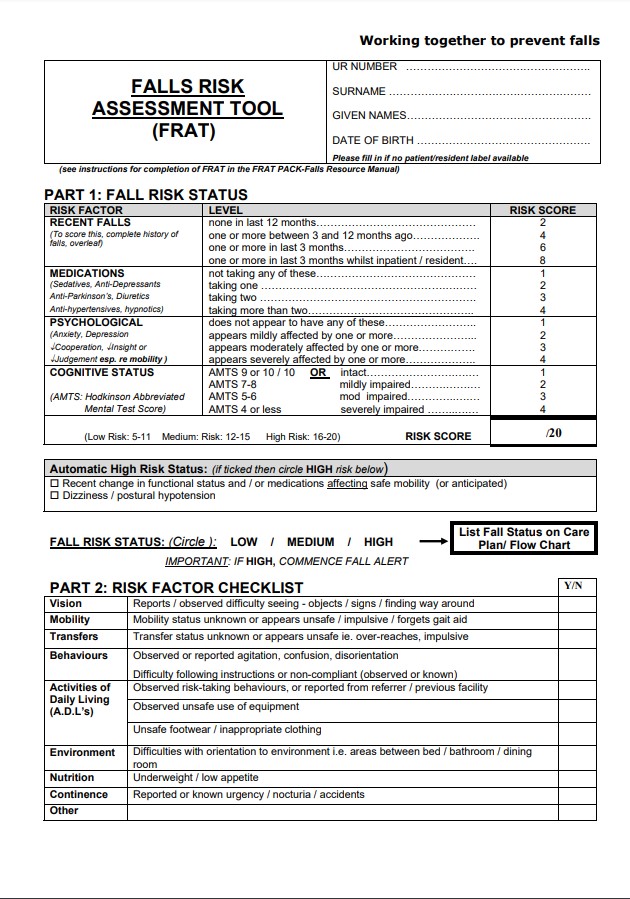Dementia Fall Risk - Truths
The Greatest Guide To Dementia Fall Risk
Table of ContentsNot known Facts About Dementia Fall RiskNot known Incorrect Statements About Dementia Fall Risk Things about Dementia Fall Risk6 Simple Techniques For Dementia Fall Risk
An autumn threat analysis checks to see just how likely it is that you will certainly fall. The evaluation generally consists of: This includes a series of inquiries regarding your overall health and if you have actually had previous drops or troubles with equilibrium, standing, and/or walking.Treatments are referrals that might lower your danger of dropping. STEADI includes 3 actions: you for your risk of falling for your danger elements that can be improved to try to prevent falls (for example, equilibrium issues, impaired vision) to reduce your risk of dropping by using effective strategies (for instance, offering education and sources), you may be asked several inquiries including: Have you dropped in the past year? Are you stressed about falling?
If it takes you 12 seconds or even more, it might indicate you are at higher danger for a loss. This examination checks toughness and balance.
The settings will get more difficult as you go. Stand with your feet side-by-side. Relocate one foot halfway onward, so the instep is touching the huge toe of your various other foot. Relocate one foot completely before the other, so the toes are touching the heel of your other foot.
The Facts About Dementia Fall Risk Revealed
Many falls take place as an outcome of numerous contributing elements; as a result, taking care of the threat of dropping starts with recognizing the factors that add to drop risk - Dementia Fall Risk. Some of the most relevant risk factors include: History of previous fallsChronic clinical conditionsAcute illnessImpaired gait and balance, lower extremity weaknessCognitive impairmentChanges in visionCertain risky medicines and polypharmacyEnvironmental aspects can likewise enhance the risk for drops, including: Insufficient lightingUneven or damaged flooringWet or slippery floorsMissing or damaged handrails and get hold of barsDamaged or incorrectly equipped tools, such as beds, mobility devices, or walkersImproper use of assistive devicesInadequate supervision of the individuals living in the NF, including those that display aggressive behaviorsA successful fall risk administration program requires a comprehensive scientific analysis, with input from all members of the interdisciplinary team

The treatment plan need to likewise consist of interventions that are system-based, such as those that advertise a safe setting (suitable lights, handrails, order bars, etc). The effectiveness of the treatments should be examined periodically, and the treatment plan modified as necessary to show changes in the autumn risk evaluation. Implementing an autumn threat management system making use of evidence-based best method can lower the prevalence of drops in the NF, while restricting the capacity for fall-related injuries.
The Buzz on Dementia Fall Risk
The AGS/BGS guideline suggests evaluating all grownups matured 65 years and older for loss threat annually. This screening includes asking clients whether they visit our website have fallen 2 or more times in the past year or sought medical attention for a fall, or, if they have not fallen, whether they feel unsteady when walking.
Individuals who have fallen once without injury ought to have their balance and gait assessed; those with stride or equilibrium irregularities must obtain added analysis. A background of 1 autumn without injury and without gait or balance troubles does not necessitate more evaluation beyond continued annual loss threat testing. Dementia Fall Risk. An autumn threat evaluation is needed as part of the Welcome to company website Medicare examination

Top Guidelines Of Dementia Fall Risk
Recording a drops history is one of the high quality indications for fall prevention and administration. copyright medications in particular are independent predictors of falls.
Postural hypotension can often be eased by reducing the dosage of blood pressurelowering medicines and/or quiting drugs that have orthostatic hypotension as a side effect. Use of above-the-knee support pipe and resting with the head of the bed boosted may also decrease postural decreases in high blood pressure. The recommended aspects of a fall-focused checkup are revealed in Box 1.

A Pull time greater than or equivalent to 12 seconds recommends high autumn risk. Being incapable to stand up from a chair of knee elevation without utilizing one's arms shows boosted autumn danger.